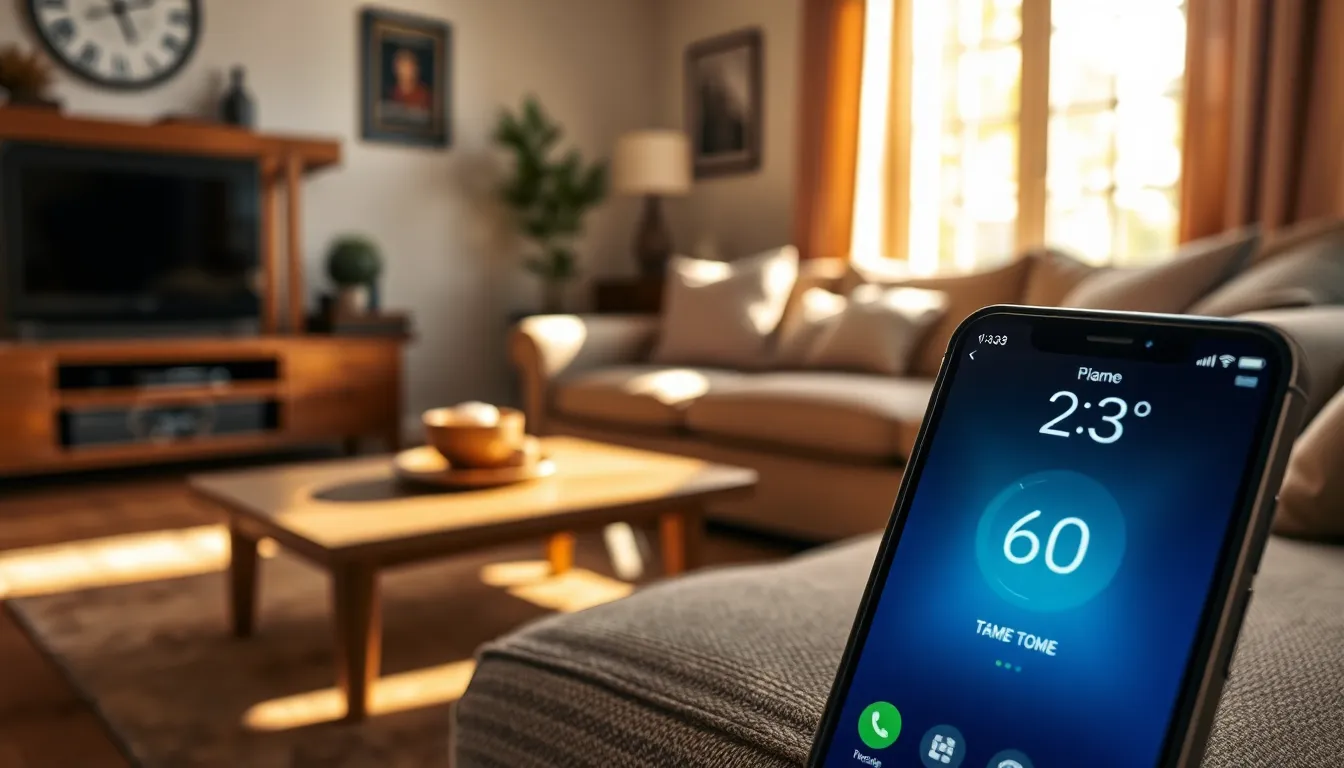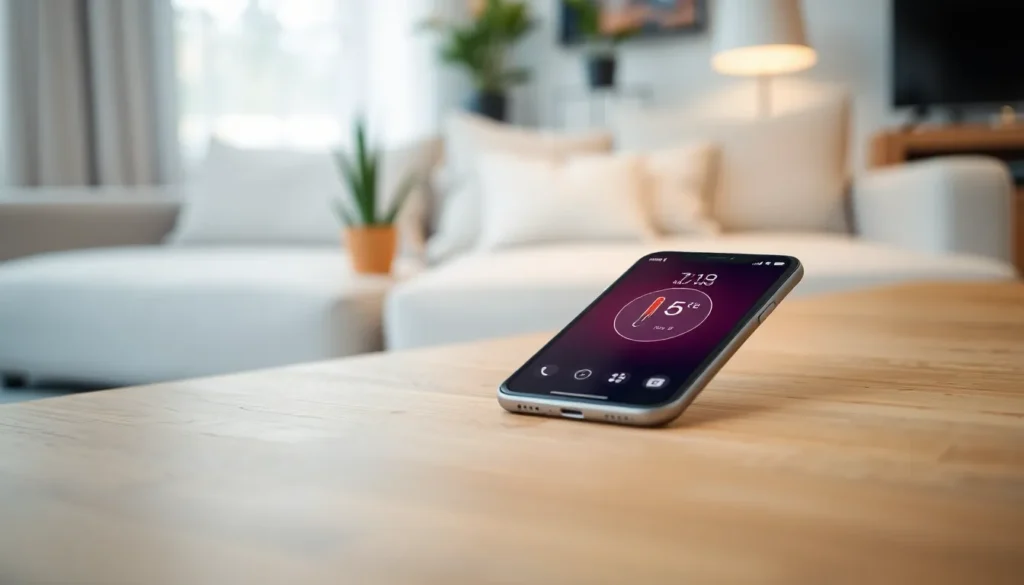Table of Contents
ToggleImagine this: you walk into a room, and the temperature feels just right. But what if your iPhone could confirm your instincts? With technology advancing faster than a cat meme going viral, many wonder if their trusty device can double as a thermometer.
While it won’t hand you a steaming cup of cocoa or adjust the thermostat, the iPhone’s sensors can provide some insight into your surroundings. It’s like having a mini meteorologist in your pocket—minus the awkward small talk. So, can your iPhone really read room temperature? Let’s dive into the tech behind the magic and uncover whether your phone can help you beat the heat or chill in style.
Overview of iPhone Sensors
iPhones utilize various sensors to enhance user experience and functionality. Understanding these sensors reveals their capabilities and limitations regarding temperature measurement.
Temperature Sensor Capabilities
iPhones feature advanced environmental sensors, but they lack a dedicated temperature sensor for measuring room temperature. Proximity sensors and ambient light sensors detect surrounding conditions, providing indirect insights. Heat generated by the device can affect temperature readings, reflecting the internal temperature rather than the environment. Users can access temperature information through compatible apps and external devices designed for temperature measurement, expanding usage possibilities.
Limitations of iPhone Sensors
Several constraints inhibit iPhone sensors from accurately measuring room temperature. The absence of a dedicated temperature sensor limits direct readings. Environmental influences such as sunlight and heat sources can alter sensor accuracy. Inaccurate data may arise from the device’s internal designation, which prioritizes performance over ambient conditions. Results from third-party applications may vary, leading to discrepancies in temperature perception. These factors confirm that while iPhones provide valuable insights, they don’t replace traditional thermometers.
Third-Party Apps for Temperature

iPhones lack built-in temperature sensors. Users can, however, leverage third-party apps to get room temperature readings.
Popular Temperature Apps
Several popular apps help provide temperature readings. Thermo App is one option, using data from nearby weather stations. Weather Underground stands out by utilizing local weather network data for accurate predictions. Kestrel allows users to connect an external sensor for precise temperature measurements. Various other apps offer unique features, yet their reliability varies based on user location and environmental factors.
How to Use These Apps
Using temperature apps is straightforward. Firstly, download your preferred app from the App Store. Then, grant necessary permissions for location access, which enhances accuracy. Check the app settings to customize preferences, including units of measurement. Users often find additional resources, such as weather forecasts and humidity levels, enable informed decisions. Taking into account the variability of conditions can improve interpretation of readings.
Alternative Methods to Measure Room Temperature
Several methods exist for measuring room temperature accurately. These alternatives can complement or replace the readings from an iPhone.
Smart Thermometers
Smart thermometers provide precise temperature readings. They typically connect to Wi-Fi or Bluetooth, allowing users to access data via a smartphone app. Popular models include the Ecobee SmartThermostat and the Nest Learning Thermostat. Features may include programmable settings, humidity tracking, and integration with home automation systems. Users benefit from real-time notifications, keeping them informed about temperature changes. This technology helps maintain optimal room conditions efficiently.
Using Other Devices
Various devices can measure room temperature effectively. Traditional thermometers still play a crucial role in temperature measurement. Infrared thermometers offer fast readings without direct contact, making them convenient for quick checks. Weather stations present another option, often providing data on indoor and outdoor temperatures. Many of these devices include humidity sensors and other environmental metrics. When selecting a unit, consider factors like accuracy, convenience, and any additional features that may enhance temperature monitoring.
User Experience and Feedback
Users share a variety of experiences when it comes to iPhones and room temperature readings. Each individual’s perspective provides valuable insights regarding the device’s capabilities.
Real-World Use Cases
Homeowners often rely on their iPhones for quick temperature checks, particularly when managing indoor climates. Many individuals use third-party apps like Thermo App or Weather Underground, finding them useful for tracking ambient temperature trends. Parents appreciate receiving alerts for temperature changes when using smart thermostats linked to their iPhones. Office workers also report using these apps while at their desks, ensuring a comfortable working environment. Users frequently combine iPhone apps with external sensors for enhanced accuracy, leading to better-informed decisions about heating or cooling needs.
Common Concerns
Inaccuracies consistently surface among users relying solely on their iPhones for temperature data. Some individuals express frustration that readings can be influenced by the iPhone’s internal heat, which skews results. External factors like going from a heated car to a cold building further complicate measurements. Many users report differences between app readings and traditional thermometers, raising doubts about reliability. Additionally, limited access to Wi-Fi or Bluetooth signals can hinder the effectiveness of smart devices. Optimal results often require understandings of these limitations for more reliable temperature monitoring.
While an iPhone can’t directly measure room temperature like a traditional thermometer it can provide useful insights through third-party apps and external devices. Users can access temperature data from weather stations or smart thermometers that connect via Wi-Fi or Bluetooth.
However it’s important to recognize the limitations of relying on an iPhone for accurate temperature readings. Factors such as internal heat and environmental conditions can affect the accuracy of these readings. For those who need precise measurements investing in dedicated temperature devices is advisable.
Ultimately an iPhone can serve as a helpful tool for monitoring temperature trends but it shouldn’t be the sole source for critical temperature assessments.




